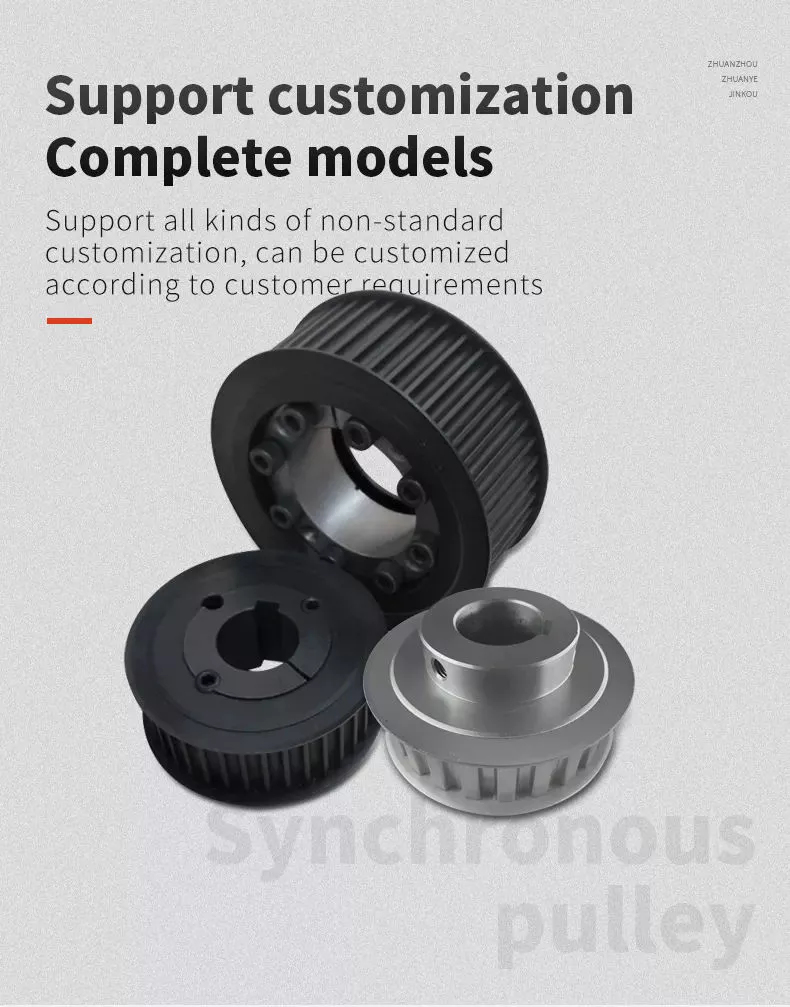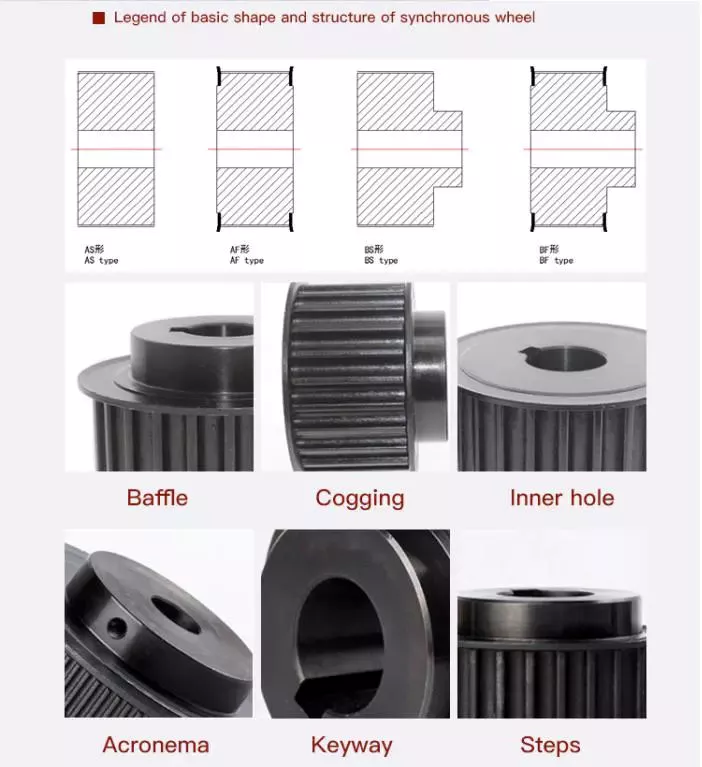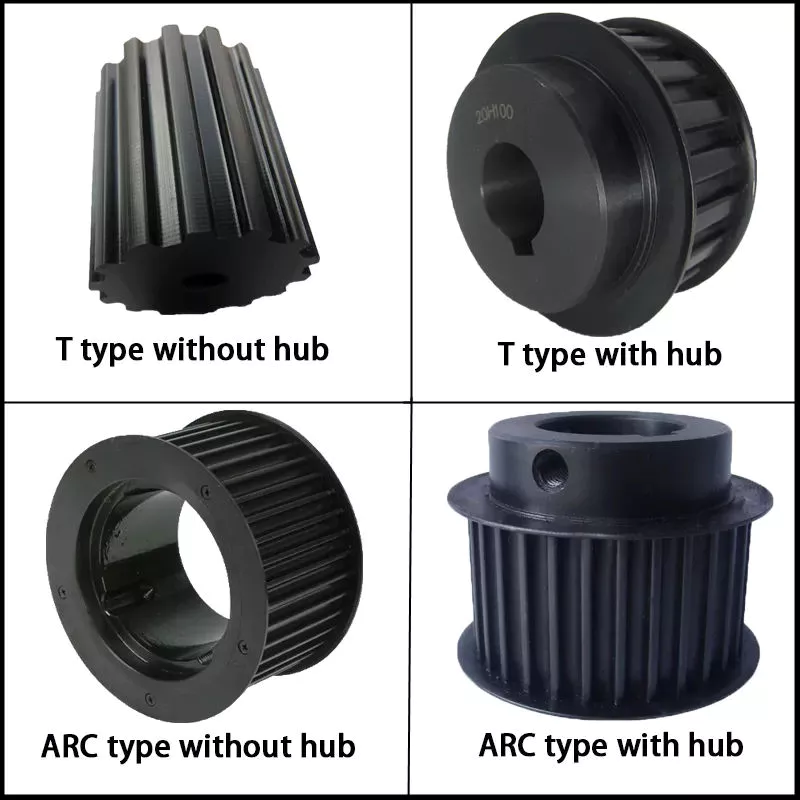Opis produktu
Manufacturer of mining used belt conveyor idler drum pulley
Huayue Conveyor Pulley Specification:
1. Pulley Diameter: 250-1800mm.
2. Belt width: 300mm to 2400mm.
3. Length: Depend on the belt width.
4. Welding: Carbon dioxide arc welding, argon arc welding, electrode welding etc.; In accordance with AWS standard or substitute welding standard
5. Lagging: Cold lagging; Hot vulcanized lagging, ceramic lagging
6. Pulley tube material: Q235 seamless carbon steel.
7. Professional pulley production line.
8. Professional designing and inspection team.
9. Certification: ISO, BV, etc
Type of Conveyor Pulley:
Conveyor tail pulley
Conveyor head pulley
Conveyor rubber lagging pulley
Conveyor steel pulley
Conveyor driving pulley
Conveyor turnaround pulley
Pattern conveyor pulley
Conveyor pulley
Rubber conveyor pulley
Head pulley etc.
Conveyor Head Tail pulley:
Head pulley can be divided into driving pulley (head pulley) and thurn about pulley (tail pulley), driving pulley is the main part for transmitting the power: Smooth surface and rubber surface, and rubber surface can be classified into smooth rubber surface, herringbone rubber surface and CHINAMFG rubber surface to meet different technical requirements. Averting pulley can be classified into smooth rubber surface and smooth steel surface.
Construction
All the pulley adopt integrated bearing housing which is lubricated and filled with grease and has 2 kinds: Iron casting and steel casting, the shaft is made of 45#steel, the shell adopt weld assembly.
Our best quality based on:
Manufacturer
Experience in Cooperate with Fortune 500 Companies
Professional Engineering Capability
Stable Quality
Reasonable Price
Small Orders Accepted
Continuous Improvements
High Product Performance
Prompt Delivery
Professional Service
For more details, please inquiry us!
Polyester conveyor belt, (EP)
Nylon conveyor belt, (NN)
Cotton conveyor belt, (CC)
Sidewall conveyor belt (SW)
Steel Cord conveyor belt ( ST )
Chevron conveyor belt, (C5 C10 and C15)
Oil Resistance conveyor belt, (OR and MOR)
Hot Resistance conveyor belt, (HR)
Fire Resistance conveyor belt, (FR/PVC/PVG)
Heat Resistance conveyor belt, (HR/ FR)
Cold Resistance conveyor belts, (CR)
Pattern conveyor belt ( 30+ Moulds)
Metal Mesh conveyor belt (Heat resistant temp until 800c)
Endless belts
Conveyor roller, idler
Conveyor Pulley, frame, bracket etc
| Type | Belt width (mm) | Standard Diameter(mm) | Length (mm) |
| Drive Head Pulley | 500 | 500 | Length of the pulley depends on the belt width of the conveyor |
| 650 | 500, 630 | ||
| 800 | 500, 630, 800 | ||
| 1000 | 630, 800, 1000 | ||
| 1200 | 630, 800, 1000 | ||
| 1400 | 800, 1000 | ||
| Tail Pulley | 500 | 250, 315, 400, 500 | |
| 650 | 250, 315, 400, 500 | ||
| 800 | 250, 315, 400, 500, 630, 800, 1000 | ||
| 1000 | 250, 315, 400, 500, 630, 800, 1000 | ||
| 1200 | 250, 315, 400, 500, 630, 800, 1000 | ||
| 1400 | 250, 315, 400, 500, 630, 800, 1000 |
/* March 10, 2571 17:59:20 */!function(){function s(e,r){var a,o={};try{e&&e.split(“,”).forEach(function(e,t){e&&(a=e.match(/(.*?):(.*)$/))&&1
| Typ: | Handling Machinery |
|---|---|
| Tworzywo: | 45# Steel, Rubber and etc |
| Kolor: | Dostępny |
| Certyfikat: | ISO9001, SGS, Bureau Veritas |
| Aplikacja: | Coal Mining Industry, Cement |
| Łożysko: | SKF, FAG, NSK, NTN, Hrb etc |
| Próbki: |
US$ 200/Piece
1 sztuka (minimalne zamówienie) | |
|---|
| Personalizacja: |
Dostępny
| Spersonalizowane żądanie |
|---|

Jak bloczki wpływają na wydajność sprzętu fitness?
Krążki mają znaczący wpływ na wydajność sprzętu fitness, umożliwiając płynną i wydajną pracę różnych maszyn do ćwiczeń. Oto, w jaki sposób krążki wpływają na wydajność sprzętu fitness:
1. Regulacja oporu: W sprzęcie fitness często stosuje się bloczki, aby zapewnić regulowany opór. Poprzez włączenie bloczków o różnych rozmiarach lub użycie systemów bloczków o różnej przewadze mechanicznej, poziom oporu można dostosować do pożądanej intensywności użytkownika. Pozwala to osobom na dostosowanie swoich treningów i postępów w ich drodze do sprawności fizycznej.
2. Systemy kablowe: Wiele maszyn fitness, takich jak maszyny kablowe i trenerzy funkcjonalni, wykorzystuje bloczki w swoich systemach kablowych. Te bloczki prowadzą liny i umożliwiają ruchy wielokierunkowe, zapewniając szeroki zakres opcji ćwiczeń. Płynny ruch ułatwiony przez bloczki zwiększa komfort użytkownika i zapewnia stały opór podczas całego ruchu ćwiczeń.
3. Stosy ciężarków: Maszyny do stosów ciężarków powszechnie spotykane na siłowniach wykorzystują bloczki do tworzenia oporu. Stos ciężarków jest połączony z uchwytami do ćwiczeń lub dźwigniami za pomocą kabla i serii bloczków. Gdy użytkownik wykonuje ćwiczenie, bloczki pomagają rozłożyć obciążenie i utrzymać odpowiednie napięcie kabla, co skutkuje płynnymi i kontrolowanymi ruchami.
4. Trening funkcjonalny: Rolki odgrywają kluczową rolę w sprzęcie do treningu funkcjonalnego, takim jak urządzenia do treningu wiszących taśm lub taśmy oporowe. Systemy te często zawierają regulowane rolki, które pozwalają użytkownikom na ukierunkowanie na określone grupy mięśni i wykonywanie szerokiej gamy ruchów funkcjonalnych. Rolki umożliwiają płynny i kontrolowany opór, zwiększając ogólną skuteczność treningu.
5. Zaleta mechaniczna: Systemy bloczków mogą zapewnić przewagę mechaniczną w sprzęcie fitness, czyniąc ćwiczenia bardziej łatwymi w zarządzaniu i dostępnymi. Wykorzystując bloczki z odpowiednią przewagą mechaniczną, osoby mogą wykonywać ćwiczenia, które w przeciwnym razie wymagałyby większej siły lub wysiłku. Ta cecha jest szczególnie korzystna dla użytkowników o różnym poziomie sprawności lub tych, którzy wracają do zdrowia po kontuzjach.
6. Płynny i kontrolowany ruch: Krążki przyczyniają się do płynnego i kontrolowanego ruchu sprzętu fitness. Poprzez redukcję tarcia i zapewnienie prawidłowego wyrównania kabla, krążki zapewniają równomierne rozłożenie oporu w całym zakresie ruchu ćwiczenia. Sprzyja to płynnym i naturalnym ruchom, minimalizując ryzyko kontuzji i maksymalizując skuteczność ćwiczenia.
7. Trwałość i bezpieczeństwo: Wysokiej jakości koła pasowe stosowane w sprzęcie fitness są zaprojektowane tak, aby wytrzymać trudy ciągłego użytkowania i duże obciążenia. Często są wykonane z trwałych materiałów i zawierają takie funkcje, jak uszczelnione łożyska, aby zminimalizować konserwację i zmaksymalizować bezpieczeństwo. Niezawodne systemy kół pasowych przyczyniają się do długowieczności i bezpieczeństwa sprzętu fitness.
Ogólnie rzecz biorąc, bloczki są niezbędnymi elementami sprzętu fitness, wpływającymi na regulację oporu, systemy linowe, stosy ciężarków, trening funkcjonalny, przewagę mechaniczną, jakość ruchu i trwałość sprzętu. Zwiększają skuteczność, wszechstronność i wrażenia użytkownika z korzystania z maszyn fitness, umożliwiając osobom osiągnięcie celów fitness i utrzymanie aktywnego i zdrowego stylu życia.

What is the role of pulleys in the mining and construction industries?
Pulleys play a vital role in the mining and construction industries, where they are utilized in various applications to facilitate heavy-duty operations, enhance safety, and improve efficiency. Here's an overview of the role of pulleys in these industries:
1. Conveyor Systems:
In mining and construction, conveyor systems are extensively used to transport bulk materials, such as ores, rocks, gravel, and construction aggregates. Pulleys are integral components of conveyor systems, guiding and supporting the conveyor belts or chains. They help in maintaining tension, reducing friction, and ensuring smooth movement of materials over long distances. The pulleys used in these systems are designed to withstand high loads and harsh environmental conditions.
2. Hoisting and Lifting Equipment:
Pulleys are crucial in hoisting and lifting equipment used in mining and construction activities. Cranes, winches, and lifting systems often incorporate pulley arrangements to provide mechanical advantage and control the movement of heavy loads. The pulleys, along with ropes, cables, or chains, allow for safe and efficient lifting, lowering, and positioning of equipment, materials, and structures at construction sites or in mining operations.
3. Wire Rope Systems:
In mining and construction, wire ropes are extensively used for various applications, including hauling, towing, and lifting heavy loads. Pulleys, known as sheaves, are employed in wire rope systems to guide and redirect the wire ropes. The sheaves help in maintaining proper alignment, reducing wear, and ensuring efficient power transmission. They are commonly used in applications such as cranes, elevators, and wire rope hoists.
4. Crushing and Screening Equipment:
In the mining and construction industries, pulleys are used in crushing and screening equipment. For example, in crushers, pulleys are utilized to drive the rotating motion of the crusher's jaws or cones, enabling the crushing of large rocks or ores into smaller sizes. Pulleys also play a role in vibrating screens, helping to generate the necessary vibrations that separate and classify materials based on size.
5. Earthmoving and Excavation Equipment:
Pulleys are incorporated into earthmoving and excavation equipment in mining and construction applications. For instance, in excavators or dragline machines, pulleys are used in the cable systems that control the movement of the bucket or shovel. The pulleys help in extending or retracting the cables, allowing for efficient excavation, loading, and material handling.
6. Tensioning and Alignment:
In mining and construction operations, pulleys are utilized for tensioning and alignment purposes. Tensioning pulleys ensure proper tensioning of belts, ropes, or cables, optimizing power transmission and preventing slippage. Alignment pulleys are employed to maintain the correct alignment of belts or chains, reducing wear, minimizing vibrations, and extending the lifespan of the components.
In summary, pulleys play a critical role in the mining and construction industries, contributing to material handling, lifting and hoisting operations, wire rope systems, crushing and screening equipment, earthmoving and excavation machinery, and tensioning and alignment applications. Their use enhances safety, improves efficiency, and enables the execution of heavy-duty tasks in these demanding industries.

What materials are typically used to manufacture pulleys?
Pulleys are manufactured using a variety of materials, depending on the specific application and requirements. Here are some of the materials that are typically used to manufacture pulleys:
1. Metal Alloys: Metal alloys such as steel and cast iron are commonly used to manufacture pulleys. Steel pulleys offer excellent strength, durability, and resistance to wear and corrosion. Cast iron pulleys are known for their high strength and resistance to impact and shock loads. Metal alloys are preferred in heavy-duty applications where strength and durability are critical.
2. Aluminum: Aluminum is widely used in pulley manufacturing due to its lightweight nature and corrosion resistance. Aluminum pulleys are commonly used in applications that require reduced weight, such as automotive engines, aircraft components, and light-duty machinery. They offer good strength-to-weight ratio and are suitable for applications where weight reduction is a priority.
3. Plastic: Various types of plastics, including nylon, polyurethane, and high-density polyethylene (HDPE), are used to manufacture pulleys. Plastic pulleys are lightweight, corrosion-resistant, and offer good resistance to wear and abrasion. They are commonly used in applications where noise reduction, chemical resistance, or non-conductive properties are required. Plastic pulleys are frequently used in conveyor systems, packaging machinery, and small-scale equipment.
4. Composite Materials: Composite materials, such as fiberglass-reinforced plastic (FRP) and carbon fiber-reinforced polymer (CFRP), are utilized in the manufacturing of pulleys. These materials offer high strength-to-weight ratios, excellent resistance to corrosion, and good fatigue resistance. Composite pulleys are commonly used in industries such as aerospace, marine, and sports equipment, where lightweight components with exceptional strength are required.
5. Ceramics: In certain specialized applications, pulleys made of ceramics like aluminum oxide (alumina) or silicon nitride are used. Ceramic pulleys offer exceptional hardness, high temperature resistance, and excellent wear resistance. They are primarily used in industries such as semiconductor manufacturing, where extreme precision, chemical resistance, and resistance to high temperatures are crucial.
It's important to note that the choice of material for pulley manufacturing depends on factors such as load capacity, operating conditions, environmental factors, and cost considerations. Manufacturers select materials that provide the necessary properties to meet the specific requirements of the application while considering factors such as strength, durability, weight, and cost.


redaktor przez CX
2023-12-18
